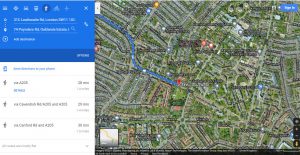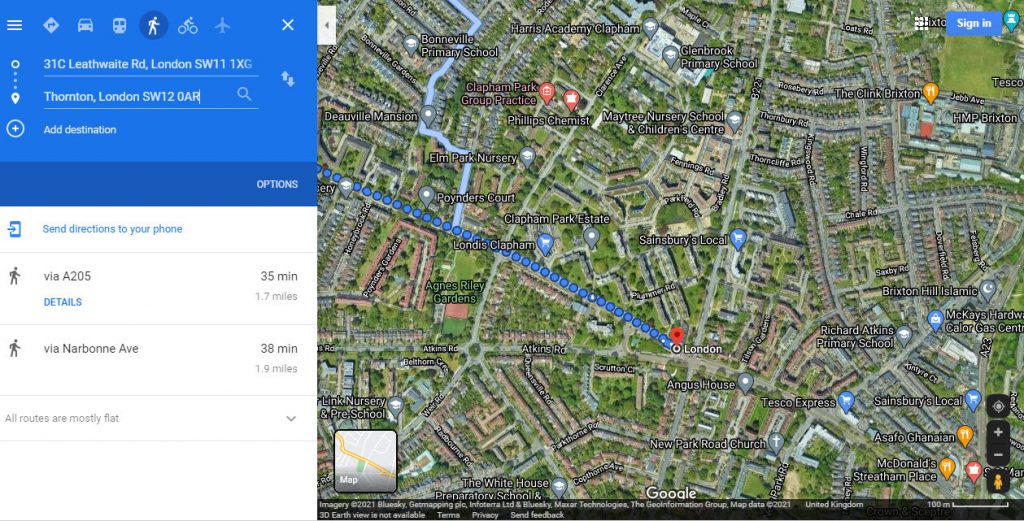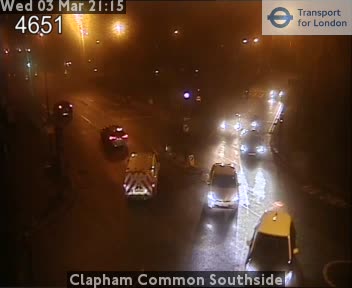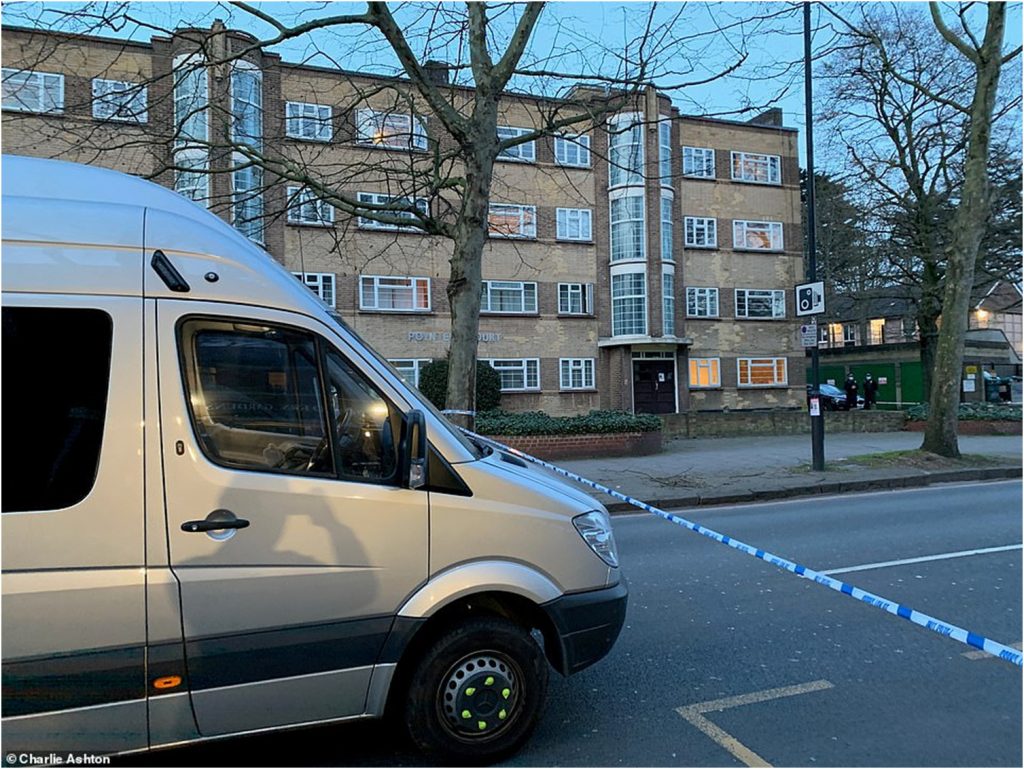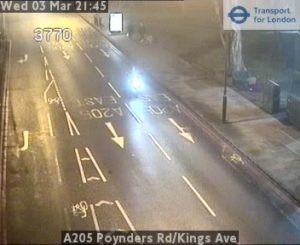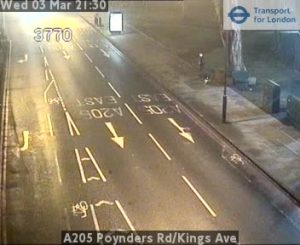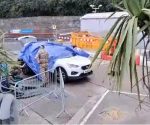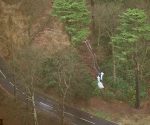The Everard murder case has the whiff of the Krypteia about it
When Wayne Couzens went to court for the first time on Saturday, March 13th, the magistrate asked the prosecutor to state details of the matter for which all there were present. Thus it was that a very important fact in the case of the abduction and murder of Sarah Everard became public, although alas known only to a minority who would happen across, or less likely be looking for the information in the few places in corporate-media where it was reported as a matter of record, and of those, not many would think it crucially significant. But for those with a knowledge of the recent history of infamous crime, the data will pique an interest, and remind of the case of the murder of Amelie Delagrange. Of course, when one has decided that that particular crime was committed by the Krypteia, which is the name given here for a department of military intelligence evidently tasked with terrorising the British people [and able to utilise other agents of the State as required in order to do it], the similarity reinforces the sense already acquired that something is fundamentally wrong in the case of Sarah Everard: please see the previous FBEL article, The Sarah Everard Disappearance; An Introduction: The Strong Sense Of Something Awry.
It turns out that, just as happened with Amelie Delagrange as she was walking on a route that would ultimately lead to her death, Sarah Everard encountered a marked police car, and she was captured on the video recording equipment, referred to as a dashcam, that is installed in such a vehicle. Here it is reported by Yahoo News (or, PA Media) [and for good measure, the Daily Express also reported the same]:
Ms Everard was caught alone on CCTV at quarter past nine, caught again on a camera at 9.28pm, and later caught on the camera of a marked police car at 9.32pm.
It could be quite reasonably said that there would be no need to let this aspect of the case cause one to become, or grow more suspicious of irregularity, but it is not on its own in terms of linkage between the Delagrange and Everard cases, and anyone who can think properly should wonder if somehow a pattern has not been revealed and observed.
Even before the existence of the deposition at the court hearing on the 13th it was known, albeit rather nebulously, that there was identification of a suspect through the use of cameras mounted to buses. Just as a car said to belong to Levi Bellfield was spotted by someone reviewing video captured by a bus, so too was a car that police appear to be saying can be traced to Wayne Couzens. In the Bellfield case(s), conviction somewhat relied on the lesser coincidence of his car being on the roads of London – spotted by bus cameras (though not in a way that left no doubt) – at the same time that victims were attacked. That the same method to identify a suspect seems to be being used in this Everard case serves as the sounding of an alarm bell. [At this juncture, it might be a good place to point out that if there is implication, or even outright assertion, using comparison between old and new cases, that the latter is also the work of the Krypteia, there will be care taken ahead of Wayne Couzens’ trial (because it must be treated as if it represents the culmination of a real prosecution of justice) that institutional culpability does not automatically translate to individual, willing and knowing involvement on Couzens’ part].
So, the court hearing revealed something already known, and something already to be wary of, but it made the information become more useful. Here is how, again reported by Yahoo News:
At around 9.35pm, a bus camera captured two figures on Poynders Road and a white Vauxhall Astra with its hazard lights flashing.
Another bus camera captured the same car with both front doors open.
It’s eminently useful to know the time when cameras mounted on buses allegedly captured a car implied by the prosecution to be associated with execution of the abduction – and it will become apparent why. Before moving on to begin to get to a denouement, there must be this brief comment: it won’t be possible, until one sees the evidence with one’s own eyes, to begin to understand if the two figures mentioned have anything to do with a white Vauxhall Astra that may only happen to be caught by camera together coincidentally. Also, the reader will surely appreciate that a car can have its hazard lights flashing quite innocently. Finally, a car with both doors open could have something to do with the fact of two occupants even before the possibility of anyone being abducted. In short, this sort of detail that isn’t interpreted for those who are meant to consume it, but only used to insinuate a case (perhaps the prosecution has not got its story straight yet) is quite useless. So, there won’t be any treatment of the content of video that bus cameras are supposed to have captured as yet.
There was a third element of the information revealed at the court hearing, of course, which was the clarification regarding when Everard was “seen”: captured three times on some form of CCTV or other while on a walk she took from a friend’s house on Leathwaite Road to Poynders Road, where the official narrative appears to say she disappeared.
For some reason, the Metropolitan Police have not released any imagery of Everard from these cameras, and there’s no good reason for it if police truly wanted members of the public who were also travelling on the route to know what they were supposed to have seen so that they could report having come across Everard. Yes, an image of a woman said to be Everard in the doorway of a shop was distributed, but wouldn’t it be more helpful to release a picture with the victim in situ in the environment of the incident to help drivers think about their own journey and where they and she would have been at certain moments during it?
Naturally, no good reason may equate to needing to not disclose a detail that wouldn’t be for public consumption, and surprisingly, the information available to us might suggest what that could be: the proposal is that there’s two versions of the abduction scenario, and Everard was further along her route than she is officially said to have been when she was kidnapped. The evidence that leads to the idea is in an abundance of corporate-media reports, and now from the disclosure in court – and a full explanation now follows.
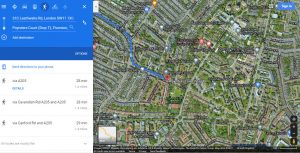
At 28 minutes (early) – at the least most extent of the range. All images can be enlarged by clicking.
It is known that Everard was spotted by a camera mounted on a door of a private residency at 9.28pm somewhere along Poynders Road. Fascinatingly, when one plots a route on Google Maps from the point where corporate-media says Everard’s journey began at 9pm*, then the vicinity of a complex called Poynders Court coincides with where the traveller would be at 28 minutes into the journey. As will be explained, Poynders Court seems to have become the place associated with a sighting of Everard via a camera fitted to a doorbell. [And to explain why there are two images to illustrate this point: Google Maps offers a range for any particular minute, So, using this example, what is shown, above, is the moment when 27 minutes has turned into 28, and then just before 28 minutes turns into 29].
Then, if the route is plotted further, one discovers a coincidence of a possible CCTV camera encounter at a significant moment in time. At the junction of Poynders Road and Kings Avenue is a TfL traffic congestion camera that points along Poynders road towards the way that Everard would have been travelling.
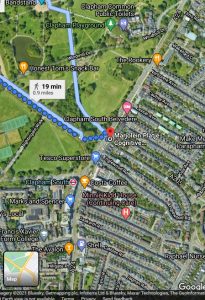
19 minutes to the junction, but covered in 15 minutes by Everard, if the camera at this place is the one that she was glimpsed by. [Google gives the early version of 19 mins early at the western side of the crossing, and the late at the other].
However, there is a detail that undermines this neat scheme in that the 9.15pm encounter with a CCTV camera most likely took place at the junction between The Avenue, which is a road across the common, as it continues as the A205, but called Poynders Road, across the A24. In the Google Maps plotter, this is reckoned as being 19 minutes (and 0.9 miles) into her journey. To do this stint in 15 minutes means that Everard would have travelled at a quicker pace than the Google Maps plotter seems to account for – although still within what is accepted as an average range of speed for walking. Instead of travelling at 2.9 mph [1.42 yards per second] (calculated across the whole journey to the junction with Kings Avenue), she would have been travelling 3.6 mph [1.76 yards per second].
As luck would have it, an image exists that might confirm this, and it comes from the archive already briefly mentioned. This archive is hosted at a place called tfljamcams.net, and it appears to store a still taken from every segment of CCTV footage created by the TfL camera network (the directory for the Poynders Road & Kings Avenue camera for 3rd March can be found here).
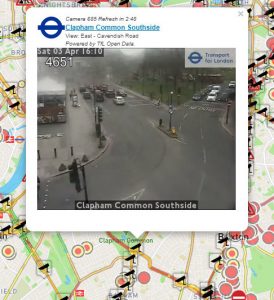
This is from a site where the camera footage can be viewed; this one is sited at Clapham Common Southside, as the map shows.
To explain how the system appears to work, each camera (when one inspects a front end on the web) looks like it records for a short duration, and this short segment will no doubt have been sent to server from the remote site so it can be viewed over the internet, on a loop, until there is an update with the latest recording. When this segment has expired, at least as far as the public is concerned, reference to it exists in the form of a still. [The author suspects that TfL can see live action through these cameras irrespective of whether they are recording or not].
So, when one looks in this archive for a still taken by the Clapham Common Southside camera at 9.15pm on 3rd March, one can be found (which is extremely fortunate). Moreover, this still shows a fluorescent glow in a place where one would expect to see a pavement, if the scene was not shrouded in darkness, at a location where a person would cross the road using a pedestrian crossing. Could this be the dim light reflecting off of Everards’ green rainproof jacket?
Very quietly in the coverage is information that tells us that Everard would have been travelling at a slower pace on the next stage of her journey, and perhaps this is not a surprise, as the first leg cuts across the common, and looks most like a country road as anything that one could find in London, and it’s reasonable to imagine that Everard didn’t want to hang about during that phase of her walk. On the other hand, when reaching the junction with the A24, her journey would then continue through densely built up areas, where there could be some relaxation. In understanding this to be so, the following extract from a Metro article provides an essential clue:
9.30pm: Footage from a doorbell camera shows Ms Everard walking along the A205 Poynders Road. She was walking alone from the junction at Cavendish Road, toward Tulse Hill. It’s thought she may have walked through Clapham Common towards her home, although police are not sure if she made it this far. Her last known location was Clarence Avenue.
It’s now known, of course, that the precise time of the encounter with a so-called door bell camera was at 9.28pm. The information about her last known location was supposedly got from cell phone telemetry, but this is probably a cover story‡: look, for instance, at this tantalising piece of information from an ITV article that appeared very early on in the saga:
Her phone signal was last picked up near Clarence Avenue, in Clapham, where she left another friend.
Google Maps tells us that at 13 minutes after the A205/A24 junction, a walker should find him or herself somewhere on the stretch of Poynders Road, east of the junction with Clarence Avenue, and between it and an apartment block called Tressider House – after this point there are no residential properties until the Kings Avenue junction (see the map embedded into this page). A best guess calculation† shows that she could have been travelling at 3 mph – (in fact, Google support implies that 3 mph is used as standard, seeing it as “normal walking speed”, although of course it was calculated as being slightly slower than that above).

Poynders Road from west to east: Poynders Court; the stretch between Rodenhurst Road and Clarence Avenue; the stretch between Clarence Avenue and Tressider House; a stretch without residential properties incorporating a T-junction with a road joining with Atkins Road; finally, the main Poynders Road and Kings Avenue junction.
[† The aforesaid stretch of road is from 0.6 to 0.7 miles away from where she would have been at 15 minutes into her journey; splitting the difference between the distances, and using the time of 13 minutes, one can work out the speed].
On this stretch of Poynders Road, on the southern side, is a row of detached houses at the end of short drives, and it’s feasible that a camera on one of these had a scope of vision which would manage to spy Everard as she passed. In fact, Google had greyed out a property on the corner with Clarence Avenue when the author inspected the street view mode.
The abovementioned ITV article informs that the data was known as early as the evening of March 5th, and so what the police did next can only be described as a knowing act of gross deception. On the morning of March 9th a stretch of the Poynders Road was cordoned off, and what can only be called a theatre was staged as police pretended to do a meticulous search for items that they would have known would not be there; i.e. signs that something had happened there whereby a clue would be deposited. The following extract from the Daily Mail describes the activity:
A short stretch of the South Circular has been closed along Poynders Road, where the block of flats [Poynders Court] are, between Cavendish Road and Rodenhurst Road.
Forensic officers have been looking through hedges and along the street as they search for any evidence that could help in their search.
The stretch of road in question is to the west of Cavendish Road, not to the east, where it had already been established that Everard had been “seen” in doorbell camera video footage. Thus she had not been abducted where police were searching for evidence of it happening.
Moreover, in a deviously cunning move, police concentrated their focus later on the same day:
At around 6:30pm this evening police in forensic suits began photographing the road and pavement outside Poynters Court, as onlookers remained on either side of the cordon.
The Metro article from whence the extract is taken also reported the following:
Detectives investigating the disappearance of Sarah Everard are now centring their search on the block of flats where she was last seen.
The 33-year-old marketing executive vanished after leaving a friend’s home in Clapham, south London, at around 9pm on Wednesday last week.
Footage from a doorbell camera shows her walking along the A205 Poynders Road towards Tulse Hill, south of Brixton, at around 9.30pm that night.
It is quite clear that on March 9th police executed an operation, with the assistance of the always compliant corporate-media, whereby the objective was to create the false perception that Poynders Court, which was so repeatedly mentioned in connection with the doorbell camera, even when the reporting was about the search on the western stretch of street up to Cavendish Road (see the Daily Mail article), was the source that had captured that footage, thus supporting an impression that Everard had been abducted in that said stretch of road between it and Cavendish Road.
And so now there can be a reasonable guess at the reason as to why police have not released the doorbell camera footage: because it might reveal that Everard had travelled further than the police want the public to understand she did.
In actual fact, Everard must have made it all the way to the junction with Kings Avenue, and even beyond. Google Maps gives the distance from the 15 minute point of Everard’s journey to the Kings Avenue junction as about halfway between 0.8 and 0.9 miles. Assuming she kept at a constant pace of 3mph, this would mean that she came to the junction after at least 16-17 minutes, or 31-32 minutes into her complete journey. Around about this time is when she was supposed to have been spotted on police car dash cam.
Perhaps related to this is how police evidently made a distinction between one set of people they wanted to talk to, and another individual who they apparently didn’t, even though all were caught on the Poynders Road & Kings Avenue junction CCTV soon after Everard could have been expected there. The first set of people was in fact two people, who may not have been with each other, but probably were judging by appearance, and as such were walking a dog. The announcement of police interest in them was relayed in the Daily Mail piece linked to above, presumably amongst other places (here, for instance):
The Metropolitan Police said that they would be interested in speaking to a pair of dog walkers seen on CCTV (above) in Poynders Road at 9.45pm on Wednesday March 3, 15 minutes after Miss Everard was seen walking down the road.
On the other hand, the author cannot find any similar interest in a person, possibly another dog walker, who was captured at 9.30pm by the same camera. While the image timed at 9:45pm made it into corporate-media, the one at 9.30pm did not.
Let’s be brutally frank, and recognise that police would not be interested in any of these people because they might create a lead in an investigation, but instead because there would be a need to know what they might, or might not have seen. Remembering that there has been an implication made in court reporting that an abduction was about to happen, or in the process of happening at 9.35pm, and that this is supposed (according to official narrative transmitted via corporate-media) to have happened before Everard would have got to the Kings Avenue junction, the people in the 9.45pm image would have been at risk of having had passed through ground zero without seeing anything that they were supposed to have seen. In fact, using the Google Maps plotter, anyone turning up at the Kings Avenue junction at 9.45pm, at ten minutes earlier, will have only been between one and two hundred yards (football pitches) away from Poynders Court, with a clear line of sight down the street ahead. On the other hand, if the 9.30pm “dog walker” is walking in an easterly direction, which it appears to be (especially if that is indeed a dog on the floor leading its human), then he or she would already be in front of Everard, and wouldn’t have been a witness to a supposed abduction. Of course, police will have a better understanding of the direction of travel, because they presumably have access to the moving versions of the images.
By 9.35pm, if she had still been walking at 3 mph, Sarah Everard would be a mile down the road from where she had been 15 minutes into her journey, and somewhere between Forster Road and New Park Road, streets both coming off of Atkins Road. Apparently, New Park Road would have been on her route, according to a list given out by police of streets where she might have been seen by the public. The ramifications are clear if police are saying that the abduction was supposed to have taken place on Poynders Road.
Moreover, we also have to accommodate the fact that the last sighting of Sarah Everard was via police car dashcam, and only moments before she would be abducted – so the narrative tells us. It’s all very well to say that release of images of this video would bound to clear things up, but as the Delagrange case showed, police dashcams inconveniently – or conveniently, as the case may be – aren’t very good at seeing the lettering on road signs, even though they only a few yards ahead and reasonably well lit. So, we might not yet discover where this police car was supposed to have come across Everard – indeed, the fact of an encounter might even now disappear and become invisible, like it appears to have done in the Delegrange case, only to surface – apparently – years later in a TV documentary long after it can do any harm. See State Crime And Police Cover Up; A Reappraisal Of Infamous Cases: Twickenham Attacks; Part Two: Getting Delagrange To The Killing Zone, here.
Please also see, Signs Of A Pysop: Wrestling In Clapham, And The Duffing Up Of Wayne Couzens (link).
* To be clear, the Leathwaite Road address in the graphics is generated by Google when the route is plotted using the same departure point that corporate-media insists on in its maps. It doesn’t represent any information that is in the public domain, as far as can be ascertained.
‡ This is from The Guardian, dated 6th March, and it is odd in itself because it features what we might call the “Woollard conundrum”, which is the puzzle that must be had regarding how it was that Everards’ friend (the one she had been visiting) was the source of fundamental data (that established the narrative as fed to the public by the corporate-media) regarding a phone call between Everard and her supposed boyfriend, and then, with this extract serving as an example, of information that seems odd being in her casual possession:
Sarah Everard, 33, went missing as she walked home to Brixton, south London, from the Clapham Junction area on 3 March after meeting a friend.
The marketing account manager spoke to her partner for about 15 minutes while walking home but has not been heard from since, according to her friend Rose Woollard.
Woollard said her phone signal was last picked up near Clarence Avenue, between her home and where she had met her friend.




